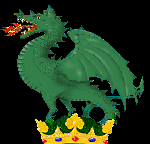| |

 Seton Church was dedicated in
the names of St. Mary and the Holy Cross. The Church stands on a
site previously occupied by the thirteenth century parish church,
two miles east-north-east of Prestonpans. Dated before 1390, when a south aisle was built by
Catherine Sinclair, widow of William, the First Lord Seton, the
Church was erected as a Collegiate Church on 20 June 1493. Church
income was thereafter entirely devoted to the upkeep of the
Provost and canons, who were responsible for the cure of souls.
Later additions to the building were made by George, 4rd Lord
Seton and his son, George, 5th Lord Seton who perished at Flodden
in 1513. Thereafter, Lady Janet Seton, nee Hepburn, generously
endowed the Church but, in 1544, it was damaged by the English,
during the invasion of the Earl of Hertford, who looted and
stripped the vestments, communion vessels, organ and bell before
burning the timber work in the building. In 1580, the Church was
united with Tranent and was well patronised until 1715 when it was
entered by the Lothian Militia. Incited by the fact that Lord
Winton was a Jacobite, the Militia defaced the interior and
demolished tombs and pavements looking for treasure and the lead
used to encase bodies. In view of their long connection with the
Church, there are many monuments to the several members of the
Seton family, all preserved by the Wemyss family who acquired and
restored the property.
Seton Church was dedicated in
the names of St. Mary and the Holy Cross. The Church stands on a
site previously occupied by the thirteenth century parish church,
two miles east-north-east of Prestonpans. Dated before 1390, when a south aisle was built by
Catherine Sinclair, widow of William, the First Lord Seton, the
Church was erected as a Collegiate Church on 20 June 1493. Church
income was thereafter entirely devoted to the upkeep of the
Provost and canons, who were responsible for the cure of souls.
Later additions to the building were made by George, 4rd Lord
Seton and his son, George, 5th Lord Seton who perished at Flodden
in 1513. Thereafter, Lady Janet Seton, nee Hepburn, generously
endowed the Church but, in 1544, it was damaged by the English,
during the invasion of the Earl of Hertford, who looted and
stripped the vestments, communion vessels, organ and bell before
burning the timber work in the building. In 1580, the Church was
united with Tranent and was well patronised until 1715 when it was
entered by the Lothian Militia. Incited by the fact that Lord
Winton was a Jacobite, the Militia defaced the interior and
demolished tombs and pavements looking for treasure and the lead
used to encase bodies. In view of their long connection with the
Church, there are many monuments to the several members of the
Seton family, all preserved by the Wemyss family who acquired and
restored the property. | |
 |
 |
The Seton Church Tour

The Interior Details

The Exterior Details

The Church History
Page 1
Page 2
Page 3
Page 4
Page 5
Page 6
Page 7
Lord Seton's Epitaph
|
